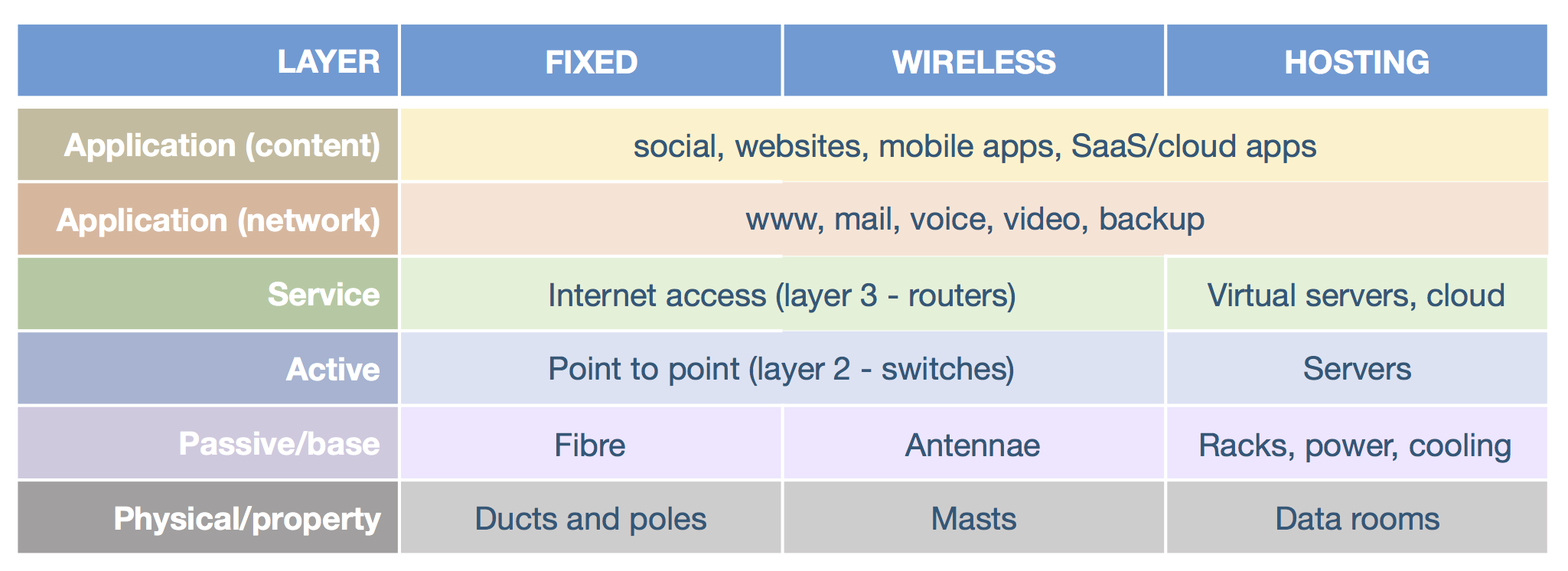Transformational Digital Infrastructure
In 2010 CBN coined a new term: ‘Transformational Digital Infrastructure’ (TDI). We wanted a way to talk about the kind of digital infrastructure that we need, distinct from ideas like ‘superfast broadband’ and ‘next generation access’.
TDI has three key elements:
- Infrastructure not service. TDI is about the infrastructure we need, not the services - like broadband - that run on it. This is an important distinction because a fully open infrastructure offers the opportunity for businesses and public sector to capture more of the value chain and to innovate.
- Nodes as well as links. Digital infrastructure needs nodes, hubs and meet-me points as well as the links between them. This is important because the structure of the old telephone system is not suited to the Internet. By building new, neutral hubs we get an opportunity to create new hotspots for digital businesses.
- Opportunity not roll-out. The Internet wasn’t planned, it grew. It’s made up of many different networks that share a common protocol. You don’t need permission to add to the Internet or create new services that use the protocol. And what you add is shared. Likewise TDI focuses on taking opportunities, to invest, to innovate without permission and sew the resulting parts together to make a shareable whole.
TDI thinking supports the concepts that we have been developing in CBN, working with our partners:
- The Thin Layer Model pioneered in Tameside allows multiple asset components to be assembled into an integrated, shared passive infrastructure.
- Digital Exchanges, pioneed in Brighton, create the neutral hubs that are needed to service new network infrastructure and help develop new digital business clusters.
- Dig Once Trusts offer a new way to create high-value infrastructure at low cost, bit-by-bit as the opportunities arise, and then share the resulting infrastructure.
- Imagine IBZL, developed with the Open University, goes beyond a limited focus on services, and looks at what is possible when innovators don't need permission and think beyond current limitations.
TDI Value Grid
The TDI value grid gives a whole-picture view of infrastructure and the value chains. The grid shows how a similar layer model can be applied to connectivity and hosting (nodes as well as links). It shows how access to the value chain is needed in wireless as well as fixed-line infrastructure. A TDI approach focuses on the layers, how thy need to be dealt with separately, and emphasises the importance nodes and hosting alongside fibre and 5G.




